I remember a long time ago, while traveling through China, where I saw a guy with a garbage bag full of disposable plastic water bottles, refilling them from a bathroom sink. So not only does bottled water come with a 280,000% markup, but sometimes it’s not even good.
And if you thought this was something that happens just in sketchy bus stations in China, you’d be wrong. About 25% of bottled water in the US is just tap water. Sometimes filtered, sometimes not.
As someone who enjoys budget travel to out-of-the-way destinations, I’ve spent the last several years keeping an eye on simple, portable, reliable water filters, preferably contained entirely within a bottle, that can handle the sorts of contaminants commonly found in chemically-flavored tap water, bacteria-filled mountain streams, and virus-hiding third world village wells. The number of convenient options that can handle all three of these challenges is, like…five or six. In the world.
So that’s why I was so glad to see a new one show up on the scene a few years ago, which can handle all of those challenges just fine, without requiring any awkward hoses, breakable mechanical pumps, slow-flow straw sucking, or any other nuisance like that. It’s called the Grayl, and it works just like a French press. Fill it up, press the filter, and drink. That’s it.
When I reviewed the original version of the Grayl, I mentioned that its filtration capabilities were as good as anything you can find, with a cost-effectiveness on par with industry heavyweights that have been around for years, and a simplicity (and elegance) that you’re not likely to see anywhere else. The only potential issue, especially for lightweight backpacking, was that it was pretty heavy, coming it at about 20.75 ounces.
Enter the Grayl Ultralight, the update that solves the only real problem the original ever had. It offers the same great filtration performance, using BPA-free plastic to bring the weight down to 10.9 ounces. It feels like a totally different product now. Grayl gave me a couple test samples and spare filters, and, given how it’s currently doing on Kickstarter, there are a lot of people just as happy with it as I am.
If you’re familiar with the original, you already know how it works, as they function identically. But if you’re new to the scene, all that info is in here too.
The Grayl Ultralight, in review
Here it is:
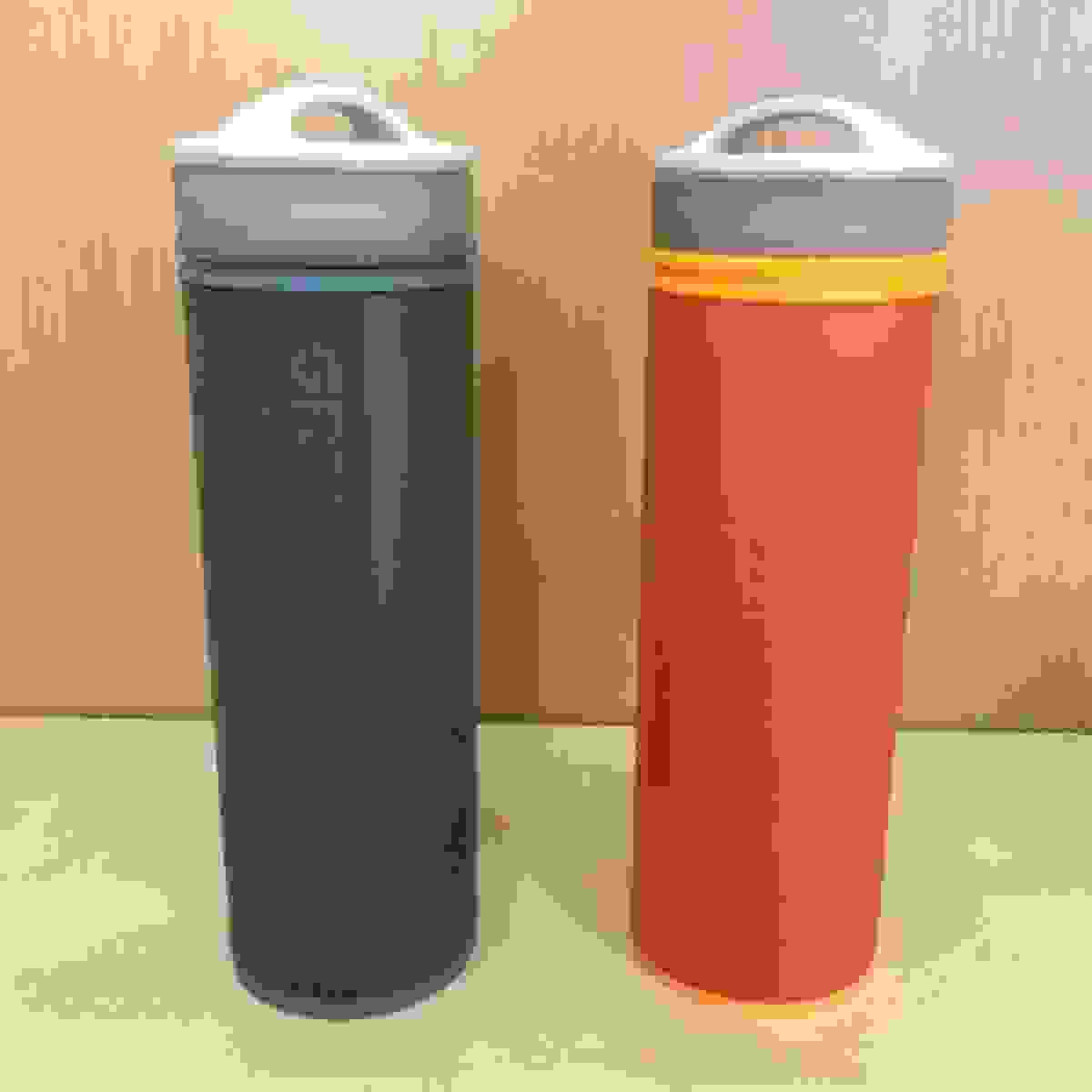
Stats
- Height: 9.625″ (24.5 cm)
- Width: 2.875″ (7.3 cm)
- Weight (empty): 10.9 oz (309 g)
- Weight (full): 30 oz (850 g)
- Capacity: 16 oz (0.473 L)
- Filter lifespan: 300 uses (40 gallons/150 L)
- Estimated Retail Price: $60 (includes one top-of-the-line Travel filter)
The big story here is the weight, which is about half as much as the original stainless steel version. For reference, a stainless steel Klean Kanteen of similar capacity is about 6 ounces (170 g), so the difference between having a filter and not having a filter is a mere 5 ounces. That’s about the weight of an average men’s t-shirt.
But as an added bonus, it’s also estimated that it’s going to retail for $30 less than the original stainless steel Grayl (now called the Legend), and $20 less than the hybrid steel/plastic version (known as the Quest). For lightweight backpackers on a budget, this is a win-win.
Filtration performance
I’m going to segue into a minor lesson on filtration and general water-related safety for a moment. The way I look at it, there are three broad categories you need to worry about when it comes to water quality:
- Particles, whether it’s dirt, dust, or sediment, but also heavy metals and chemicals, like lead, arsenic, chlorine, and many others. These can be found in ordinary tap water, and certain rivers, or lakes, and so on. Most carbon filters can handle this, and it’ll also make the water taste nice and clean.
- Bacteria, like E. Coli and Salmonella, but also bacterially-sized things, like protozoan cysts, such as giardia and cryptosporidium. I group these together, because if a filter can handle bacteria, it can handle the others. You’ll need something that can handle this category (and most likely the previous one) if you’re hiking or otherwise enjoying the great outdoors.
- Viruses, which is where many filters fall short. They’re significantly smaller than bacteria, which means you need a much better filter to handle them. Oh, and when people say their filter can remove viruses, you want actual numbers. If someone says “hey, we remove viruses!” but don’t say how many, that’s probably a bad sign. You won’t run into viruses if you’re just hiking around in a modern country, but if you’re heading someplace like rural Africa or the Amazonian jungle, you’ll want something that can handle this category (and the previous two).
Conveniently, Grayl’s filters come in exactly these options:
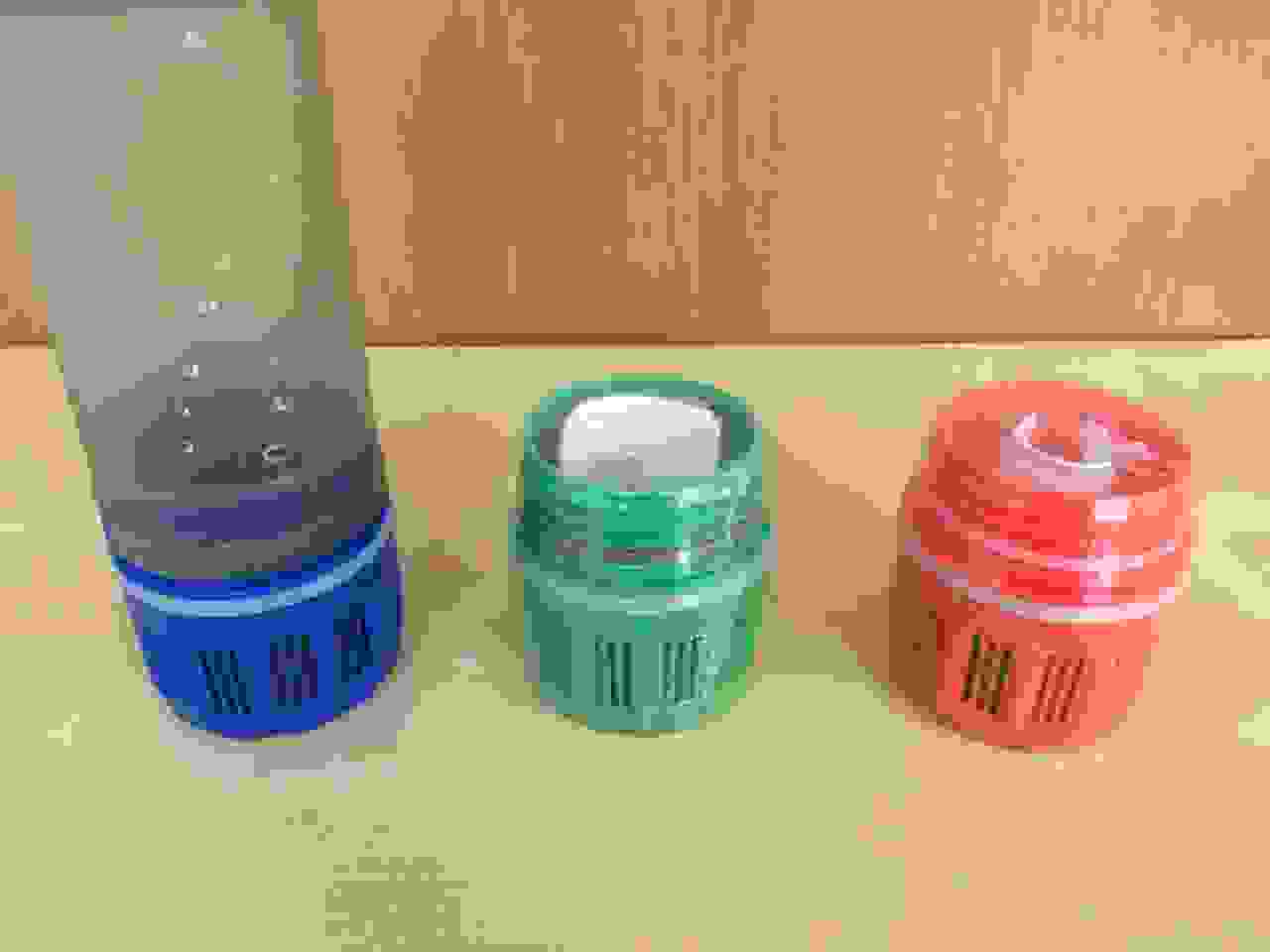
From left to right, those are the Tap, Trail, and Travel filters, conveniently named for exactly what they can handle. The Tap filter is for filtering water at home (filtering particles); the Trail filter is for outdoor hiking (filtering particles and bacteria); and the top-of-the-line Travel filter is for international travel (filtering particles, bacteria, and viruses), or for any seriously questionable water source.
This allows you to use only the filter you need, such as using the Tap filter at home, and swap it out for a Travel filter when you’re heading off to the Sahara or someplace like that. Each filter lasts 300 uses, or 40 gallons (150 L), and will slow down when it’s time to replace it.
Update: Grayl has streamlined the replacement filter options, and now offers either the Tap filter or the top-of-the-line Travel filter (which has been renamed the Purifier). A lot of customers were asking which filter was appropriate for which situation, and this way they don’t have to worry. Use the tap filter at home, and the purifier for everywhere else. As an added bonus, they’ve dropped the Purifier price from $40 to $25.
Here’s the performance of each:
Tap filter ($15) removes:
- Chemicals and metals, such as chlorine, iodine, lead, arsenic, and others. Also improves flavor and odor.
Trail filter (discontinued) removes:
- Chemicals and metals, such as chlorine, iodine, lead, arsenic, and others. Also improves flavor and odor.
- 99.99% of bacteria
- 99.94% of protozoan cysts
Travel filter ($25) removes:
- Chemicals and metals, such as chlorine, iodine, lead, arsenic, and others. Also improves flavor and odor.
- 99.9999% of bacteria
- 99.999% of protozoan cysts
- 99.9999% of viruses
Yes, count up those 9s on the end. I am not aware of any filter that matches this level of performance (most of them don’t bother filtering viruses at all), and even fewer that also offer the convenience of a bottle, which, if you haven’t tried it, is the only way to go.
Using the Grayl
Nothing says “elegant simplicity” like a minimum of components.
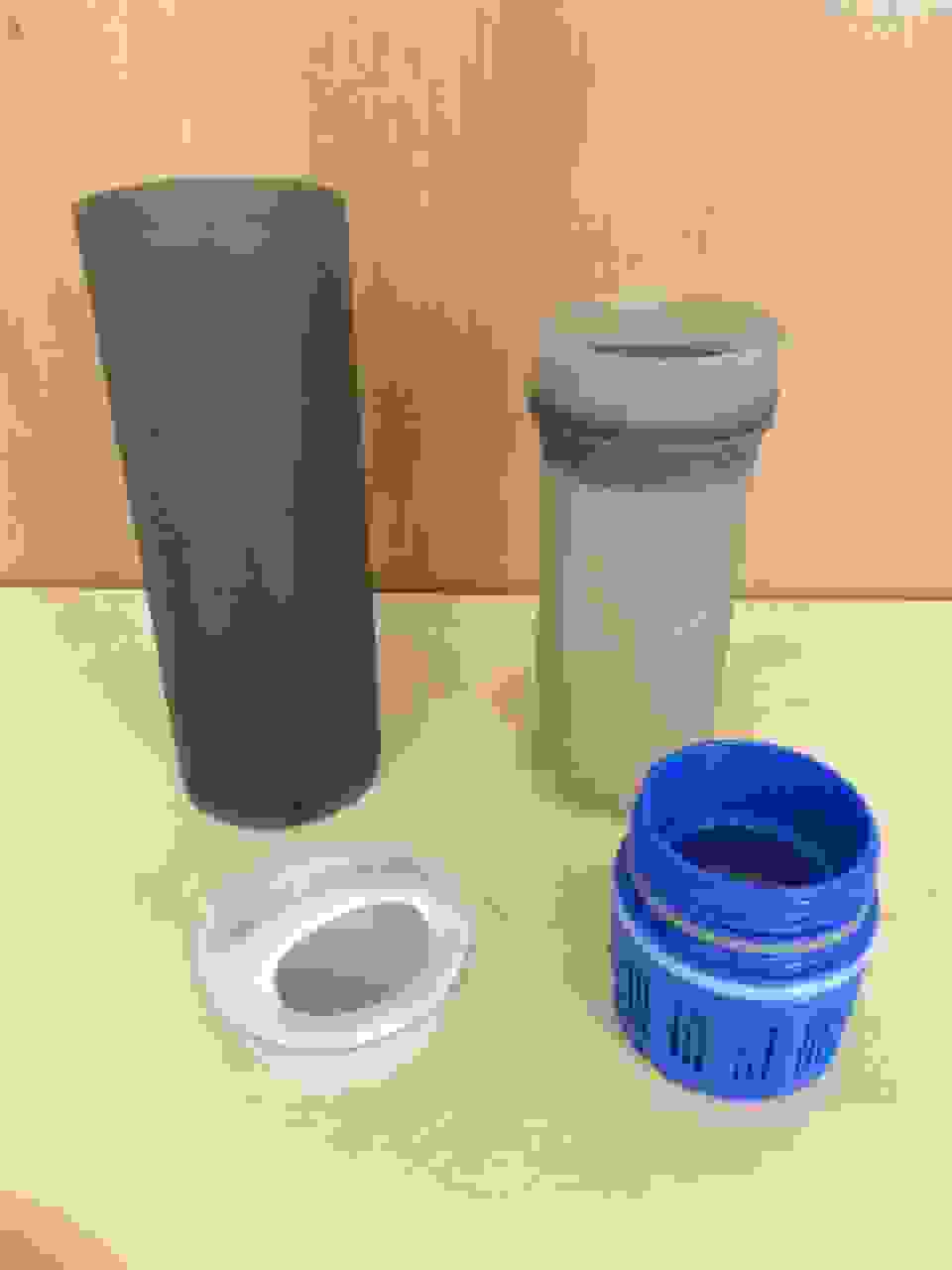
Just fill it up:
Press:
And drink:
It’s really just that simple. There’s no pump to break; no batteries can run out; no iodine to ruin the taste; no hose to uncoil and put away afterwards; no bag to hang up on a branch; no bulb to replace; no straw to hold onto the grime that gets stuck inside…no nothing. Just a few simple components that are easy to use, easy to disassemble, and easy to clean.
The only alternatives that can remotely match this ease of use are the soft-sided bottled filters that use a straw, and you suck the water through the straw while squeezing the bottle to get the water through the filter. It works, but the flow rate is pretty slow, which is agonizing when you’re trying to rehydrate on a hot day. And sometimes those bottles inexplicably use stainless steel, so you can’t squeeze the bottle to increase the flow rate. All you can do is suck. And that really sucks.
Since the Grayl presses the water through the filter all at once, you don’t have to deal with any of that, so drinking from it is just as easy as drinking a glass of water. It does take some extra effort ahead of time, since you have to press the water through the filter (it’s good to press against a low coffee table, or kneel down and press it against the ground, so you can use your body weight to make it easier), but the 15-30 seconds it takes to press the Travel filter means no sucking and squeezing later, and the Tap and Trail filters go even faster.
You know what else is great? You can pour the clean water into another container.
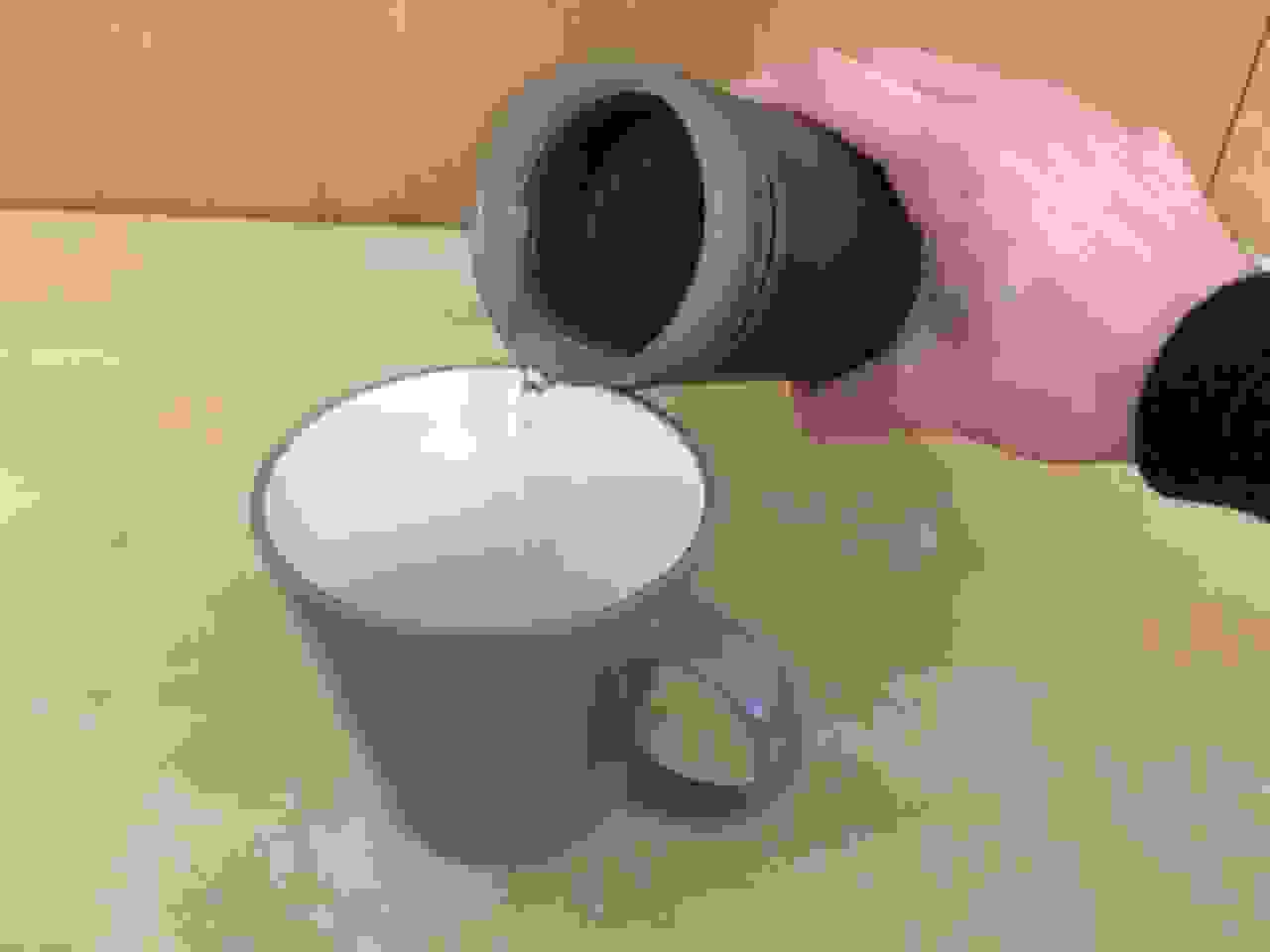
That’s generally out of the question for the suck/squeeze bottled filters, which means you can share a single Grayl between multiple people, or use it to fill extra bottles for backup. You could do the same thing with pump/hose filters, but the Grayl Ultralight is lighter, simpler, and has a lower upfront cost.
Minor improvements to this version
Compared to the original stainless steel Grayl Legend, the Ultralight has a couple design changes that fix minor usage issues.
1) Straighter
Notice how the stainless steel version can tilt a bit as you close it, whereas the Ultralight stands up straighter:
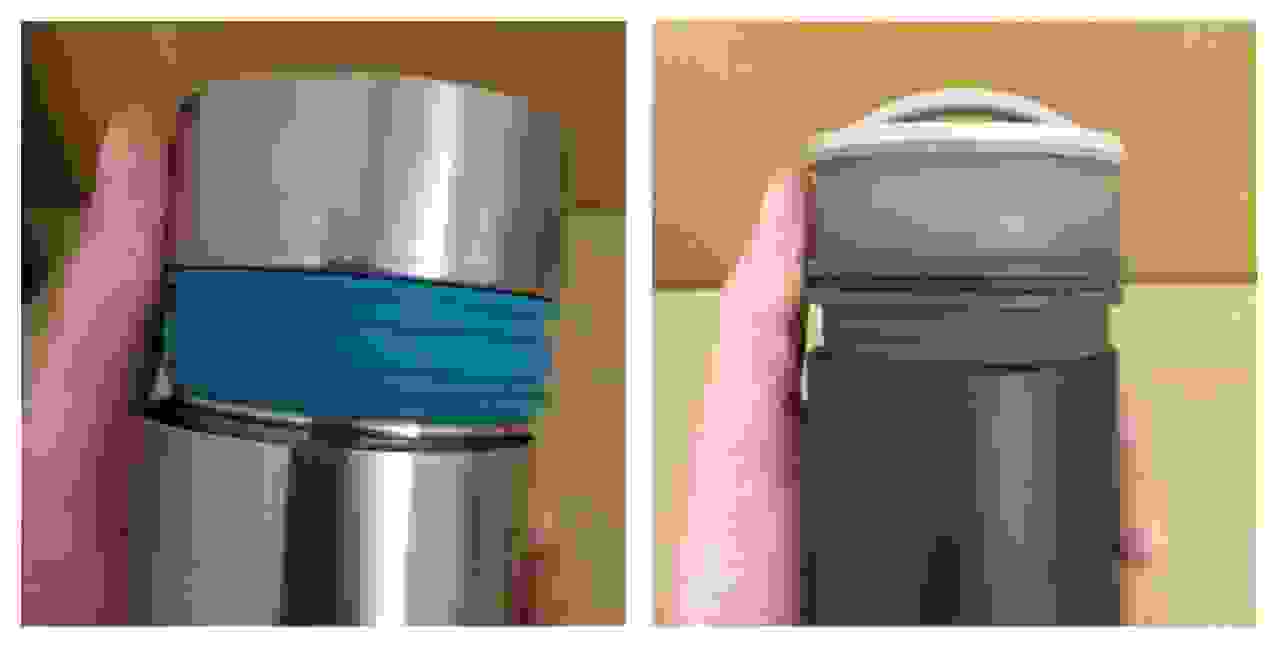
With the stainless version, it’s possible for the lower cup to “bite” into that blueish rubbery band, whereas the Ultralight won’t do that. This is partly due to the extra thickness of the plastic, which keeps it much straighter, plus that 90 degree angle where the outer cup meets the seal. There’s nothing to get in the way.
2) Grippier
That rubbery band is also bigger than before, jutting outward just a bit, rather than being recessed slightly, providing a non-slip grip for your thumb and forefinger. The plastic used in the bottle is also a bit textured, so it’s fairly grippy as well, and the textured surface also cuts down on condensation building up and dripping down the sides if the water inside is too cold.
3) Clippier
Lastly, the new lid can hook into a carabiner:
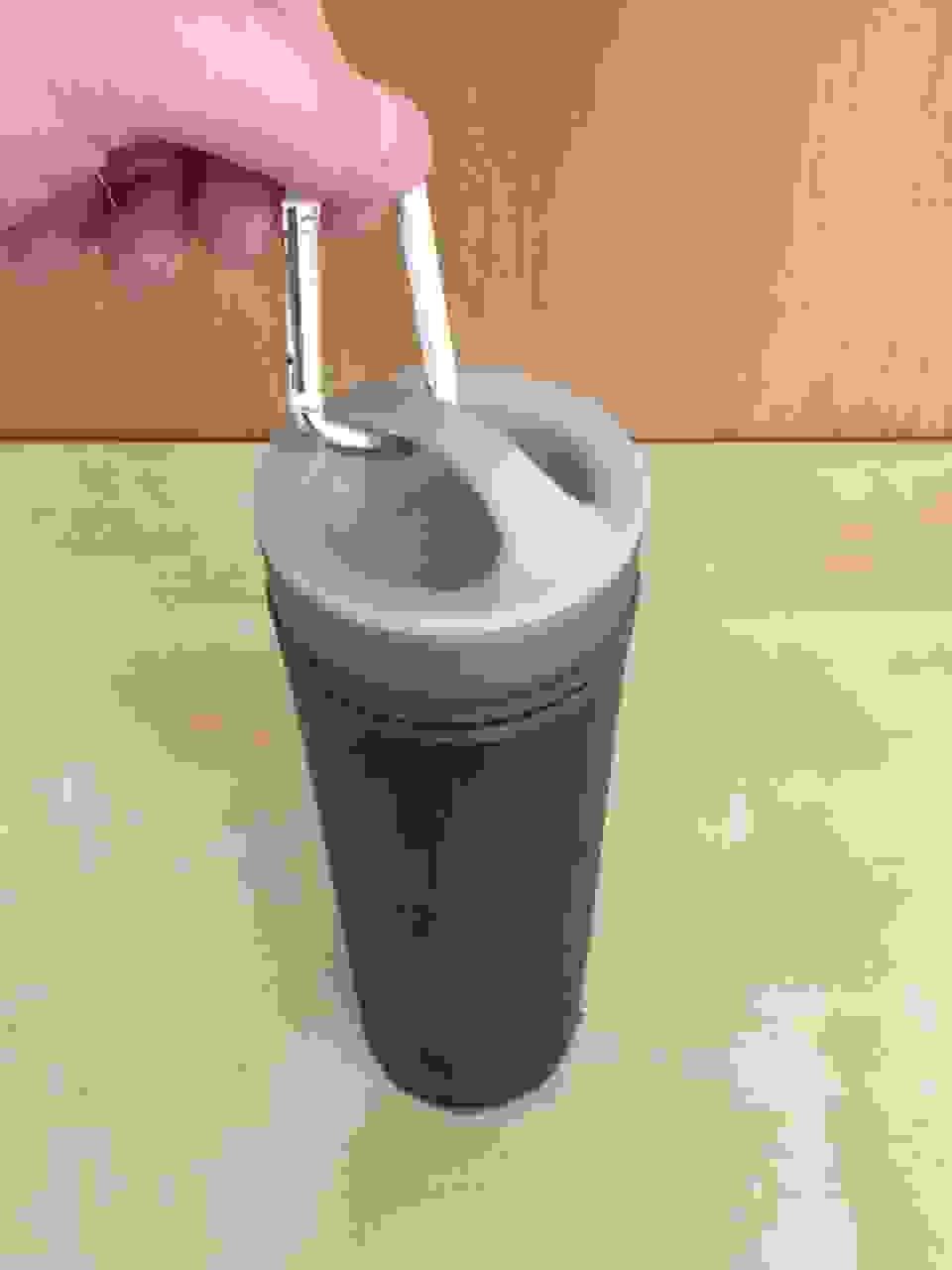
This is great for clipping it onto the side of a backpack, usually through the compression strap that tends to be over there, or you could loop a shoulder strap through it and carry it by itself, without needing a daypack.
There’s some discussion of maybe designing an alternate cap with a smaller drink spout, which would make it easier to drink while moving on a shaky bus, or riding a bike. I’m looking forward to seeing something like that at some point, but in the meantime, this is quite simple, lightweight, and carabiner-compatible. It also doesn’t take that many rotations to open it. You know how you have to rotate certain caps three or four whole times to get them open? This one doesn’t need more than a quick twist.
Minor usage tips
- You’ll want to use your body weight when you’re pressing the filter, especially when using the top-of-the-line Travel filter, which has more resistance than the other filter options. As mentioned, find a low coffee table, or a sturdy chair, or just kneel down and press against the ground, rather than using a high countertop.
- When pressing the filter, or removing the inner cup from the outer cup to fill it up again, open the lid just a bit. This will let the air escape, so you’re not fighting against a vacuum.
- When you’re pressing the filter, leave the cap on, but open slightly, so you don’t get your hands on the rim where your lips will go.
- If you take it on a plane, the air inside the bottle will be under a higher pressure than the air inside the cabin, which can force the seal open. So when you get up into the air, just open the lid, and close it again. That’ll equalize the pressure. You can also empty it out before you fly, so there’s no water to leak out (remove the inner cup from the outer cup and empty both, as there’ll be a bit of moisture in the pre-filter area as well), or, alternatively, you can fill it up all the way, so there’s little or no air inside that can change pressure. Fun physics fact: Liquids don’t change much in response to pressure.
- When you’re removing the inner cup from the outer cup, twist it a bit, instead of just pulling it straight out. It’ll come out more easier.
Final thoughts!
As you can tell, I’m quite happy with this. The one and only potential problem with the original design was the weight, which has been completely solved. The filtration performance is up there with the best filters you can possibly find, and even beats several of the more famous options out there, often by a lot. Better yet, this fits into a bottle you can take with you anywhere, with no dangly hoses, no pumping, no sucking, no squeezing, no lightbulb shining, no battery switching, no waiting half an hour for iodine tablets to work, and no iodine flavor when you’re done waiting. Just fill, press, and drink.
In the last few years, certain worthy competitors have halted operations, while several others have been shown to have wildly unrealistic marketing claims, and some continue to be inexplicably famous despite their insufficient performance. And, in the same time period, we’ve had lead poisoning scares, E. Coli outbreaks, and other nuisances that most filters were not designed to solve. They even treated the E. Coli outbreak with chlorine, and then the water tasted like chlorine. Great!
Grayl is one of the inexplicably few options that can handle all these contaminants (and pesky viruses), with removal rates as good as anything you’ll find, combined with unrivaled ease of use and portability. And by swapping out the filters according to what level of filtration you need, you can use it at home, in the woods, or in remote villages in developing nations. In other words: Anywhere.
Now that there’s a lightweight version at half the weight (and a lower cost), there’s just no down side. This is coming with me wherever I go.
Head over TheGrayl.com to check it out.
As mentioned, they’ve provided me with a test sample, and, years after this review, made me a revenue-sharing offer as well. But I liked it long before then anyway.

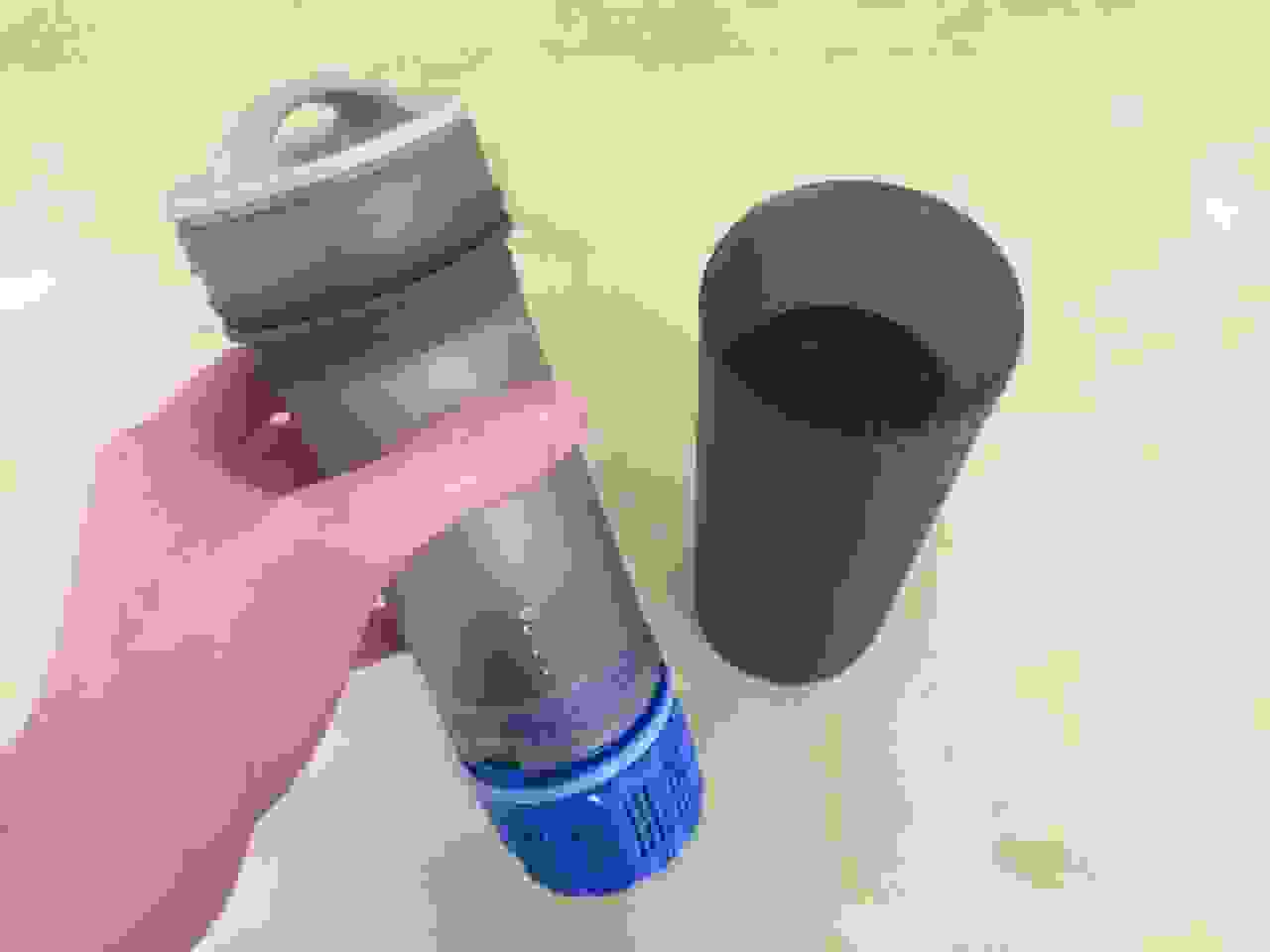
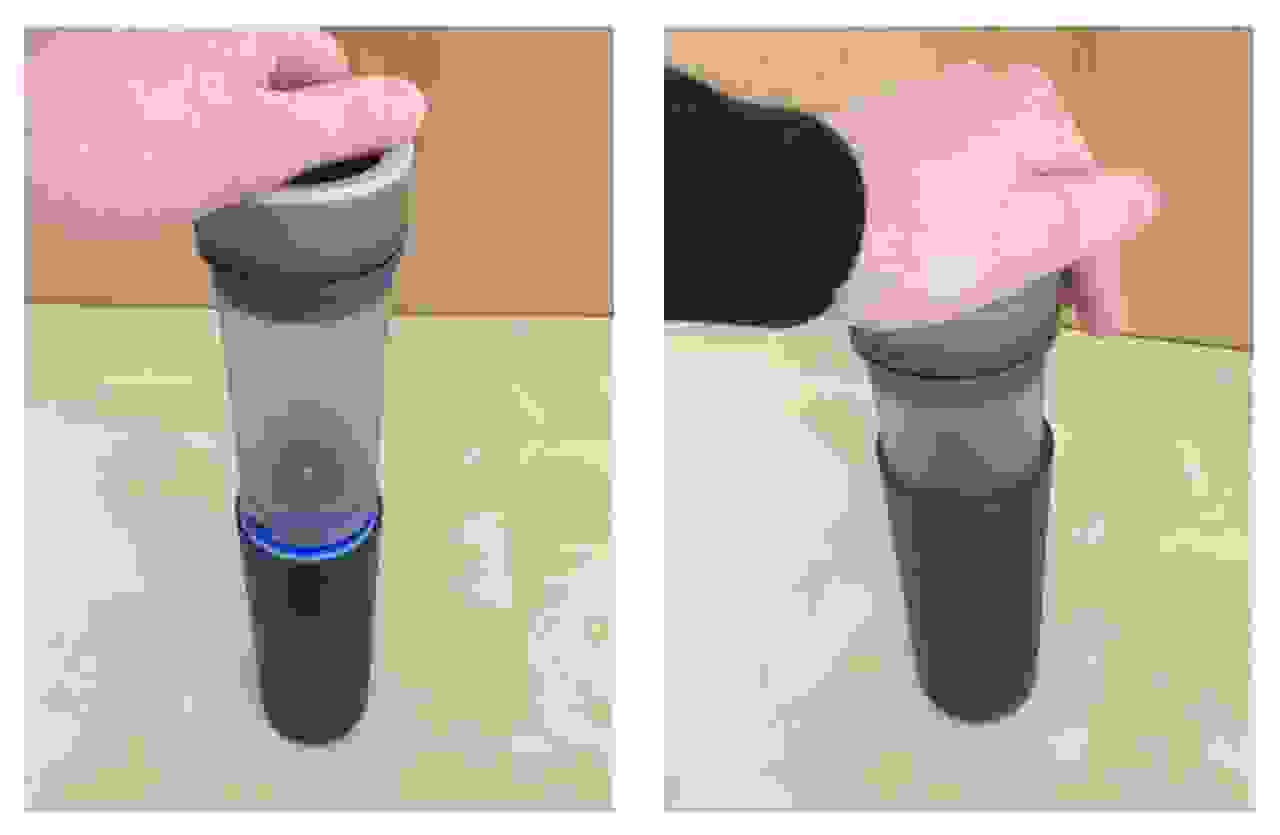
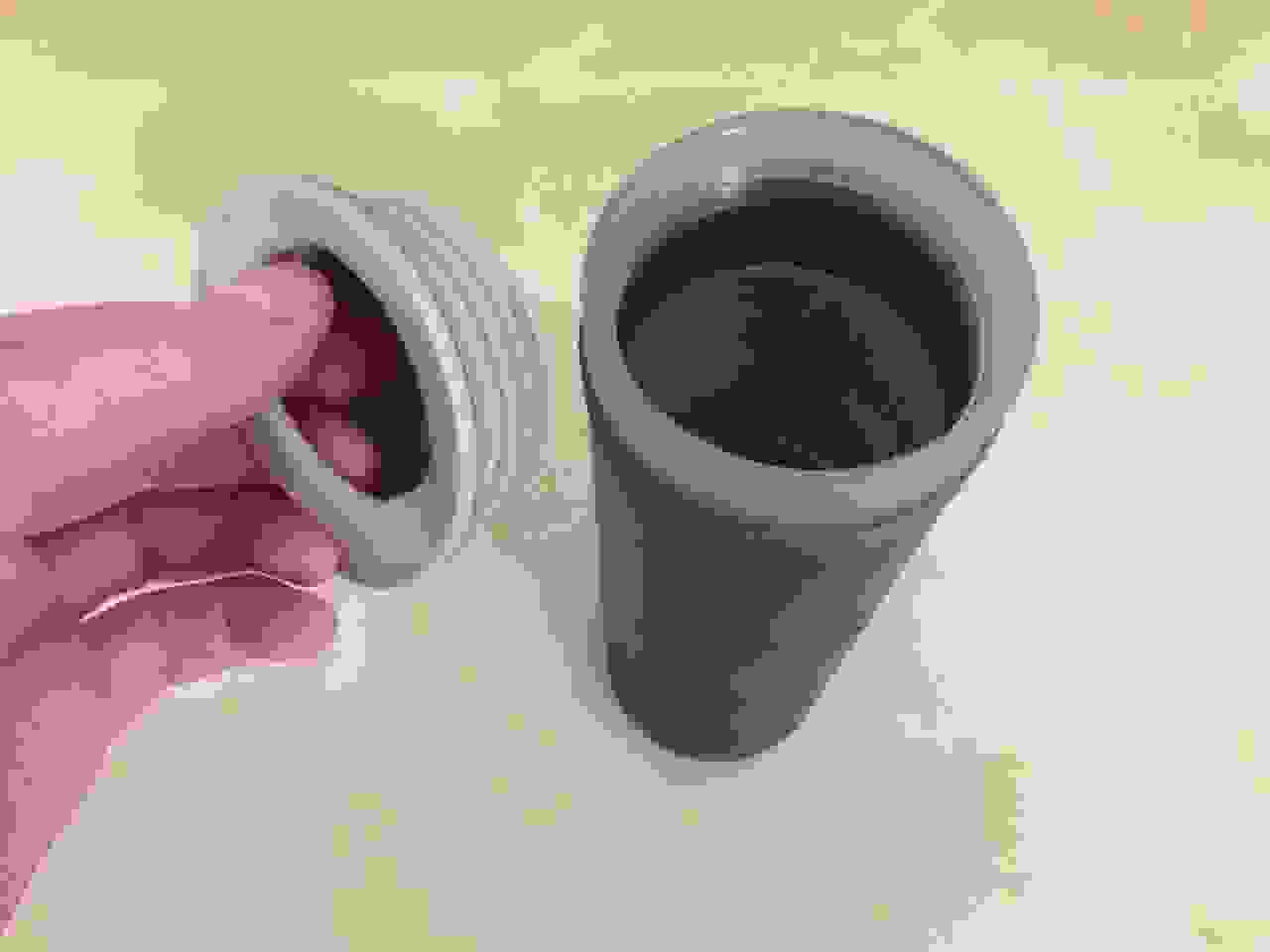



Does the new inner bottle work with the original steel outer cup?
Oddly enough, yes. It looks a little weird though, because the steel is a lot thinner than the plastic, so instead of lining up correctly, the top part (the inner cup) will kind of stick out wider than the outer cup. Vice versa works, too, although in that case the plastic outer cup will be wider than the stainless steel inner cup, kind of like what the Grayl Quest looks like now.
Could you compare the pressure to use the travel filter with the pressure to make coffee with an aeropress? I only ask because you mentioned them in that post for caffeine and travel addicts like me.
Actually that’s a good way to compare, although I gave away my Aeropress when I was trying to quit coffee (still sad about it…), so I can’t do it side by side, though as I recall, the Aeropress was a bit easier than pressing the Travel filter (soon to be renamed the Purifier). I never really felt the need to put the Aeropress onto a shorter table to do it, although I did lean over it, resting my head on top of my hands to get more weight on it. The Tap filter is a lot easier, though. Easier than an Aeropress, I would say.
How secure is the cap? I tend to throw everything into a backpack (single large compartment), so I’m a little nervous about the quick twist cap.
The silicone band is what keeps it tight, so it’s going to be as tight as any other cap. It just has fewer plastic threads, which don’t do anything to create a seal, so that’s why I like how there aren’t so many of them. The extra twists on other bottles don’t accomplish anything, since it’s just the silicone part that matters. It’s super tight.
The kickstarter page for the Ultralight claims “Fast Flow Rate: 15 seconds per 16 oz (2 liters/minute)”… However, the Grayl website states “Press time: 30 seconds per 16 oz (473 ml)
Flow rate: 1 liter/minute” for the Quest with Travel Filter. Has the travel filter been redesigned? Reducing the filtration time by half is huge if the kickstarter page is accurate.
I bought the Quest with Travel filter two months ago for some 2016 trips — Mexico, Peru, Spain, London, Thailand, and other areas in Southeast Asia. Do you think that this update is worth replacing the Quest I just bought?
So the filter is the same, but they recommend a different technique to press the filter; kneeling down and pressing against the ground, so you can get your body weight over it. That speeds things up quite a bit. Low tables, like coffee tables, instead of high countertops, will help in the same way. They probably haven’t updated the numbers for the Tap/Trail/Travel filters on the site because they’re going to revamp the options anyway, by shipping every Grayl with the Travel filter. People kept asking which filter does what, and everyone loves the Travel filter anyway, so they’re just going to give everyone the best one and nobody has to worry about which is which.
I really, really like the weight reduction on this thing, and for me, it’s a big enough deal that I’m happy to make the switch. But if you’re happy with the Quest, the weight difference isn’t gigantic…I’d say it depends how often you plan on using it, how much hiking you’ll do, and so on. If you feel the Quest is still pretty heavy, then go for it.
Ah, that’s where the confusion came from. Thanks for the clarification.
I really hope they don’t take away the different filter options because the Tap and Trail are *much* less expensive than the Travel filter. If the Travel filter is the only one available I will probably stop using the Grayl for every day use and only use it when traveling.
So from the Kickstarter updates page, the plan is to eliminate the Trail filter, but continue offering the Tap and Travel filters, but at reduced costs. They’re saying they might bring the Travel filter all the way down to $25. That number might change, but that’s the tentative plan. I think that since so many people were asking which filter is which, they can save a lot of time and customer service emailing by just shipping every bottle with the best filter, instead of offering so many different options. That’s the one people like the most anyway, and then they don’t have to worry about it. But they’re still going to offer the Tap filter as a separate item on their website, so you can use it on tap water at home, which is nice, since that’s what most people would be doing on a daily basis. So instead of Tap, Trail, and Travel, it’s basically going to be Tap and Everywhere Else.
This looks like very nice piece for backpackers and I like the lid much more than the Legend. My only gripe about the legend is that it’s really hard to drink from the cap and it has leaked if not seated properly.
Do you know if I can buy just the inner sleeve? As I do motocamping in the backwoods I much prefer the tougher metal. A wipeout ending with a cracked water filter could be as bad as a cracked bone!
Thanks for doing this site. I know you get something out of it… but so do I :)
Your review led me to the Grayl and about 2 years in I still feel it to be one of my best pieces of equipment.
I don’t think you can buy just the inner sleeve, but the inner plastic sleeve does in fact fit into the metal outer sleeve of the Legend, oddly enough…although it looks a little weird, as the plastic Grayl is wider overall than the stainless steel one.
Thanks! I bet down the road they will sell replacement parts. At $60 I cant justify the purchase just to get the lid :)
Mighty buy one for the wife though and swap them when she isn’t looking!
One quick question, I hope you can answer-
How strong is Ultralight? Less than Legend? I just am wondering- I usually throw it in a backpack with other stuffs including metal objects. Of course, it would crash everything if it is dropped.
The plastic is actually pretty thick, so I actually wouldn’t get too worried about it. The metal version is obviously going to be stronger, and it’s also thick enough that it’s difficult to dent it (because it needs the walls to be straight, to form the seal, so they’re thick and strong). But I think you’ll probably be fine.
I’m really looking forward to the Ultralight as my main complaint about the original version (which I received in a giveaway hosted by you) is that it’s too heavy. For a while, I was filtering my water with the Grayl then transferring it to a lighter plastic bottle. As for how much pressure it takes to push down on the unit, my troop of 10 year old Girl Scouts could all do it without any problem at all.
P.S. I’m hoping that lightning will strike twice by you hosting another giveaway for the Ultralight and me winning it.
Congratulations on winning the first time! Happy to hear you liked it too, and I can definitely say that the new one resolves the only potential problem of the original (although I think I’ll take the stainless steel one if I ever had to go on a fancy business trip with board meetings or something like that). No news as far as giveaways go, and I’m planning to be out of town pretty soon, which is part of the reason I try to avoid them. It takes some coordination that I can’t always manage if I’m in the middle of nowhere with no internet connection. But it uses the same exact filters as the one you’ve already got, so if you have spare filters, you won’t have to buy new ones for a little while.
What about cleaning? We currently take stainless steel ones which are easy enough to clean with some vinegar and bottled water, but take a while… and bottled water defeats the purpose
If you can scrub with clean water, that’s fine; if you only have not-quite-clean tap water, then clean it with tap water, and then rub it all over with alcohol. I usually just clean the mouthpiece with an alcohol swab every so often, and I wait until a trip is over and I get back home to clean out the whole thing. If a trip is only a few weeks or even a few months, I don’t worry too much about bacterial buildup (especially since the filter is drawing them right out of the water).
Awesome, thanks!
My family has a pathological water Boil rule ( Grampa’s first wife died from tainted water in the 30’s, in Asia)
I’ve had the original since 2012, and have used it from airport bathroom sinks to jungle rivers. I LOVE THIS THING!!
But…. Do I need to get a whole new rig, or do the newer filters fit the original?
The filters are all the same, so they’re interchangeable between the stainless steel and plastic versions.
Fantastic!!
Thanks for the info.
How long do the filters last…I am planning for several months in Mexico and South America….
They each last 150 liters, so if you drink a liter a day, that’s 150 days. But it’s usually hot in Central and South America, so you might be drinking 2 or 3 liters a day or more, so plan on them lasting about 2 months each at the most. But you also might buy drinks like juice, soda, coffee, and others along the way, so that’ll help them last longer.